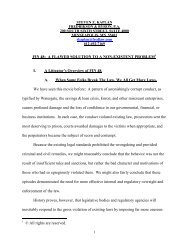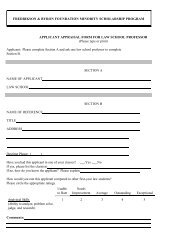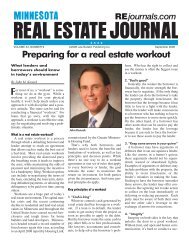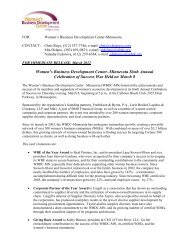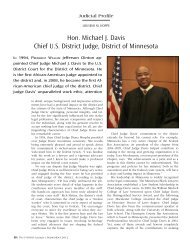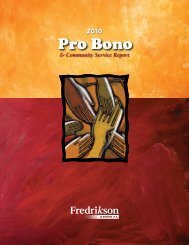Kivalina - Order Granting Motion to Dismiss for Lack of Jurisdiction
Kivalina - Order Granting Motion to Dismiss for Lack of Jurisdiction
Kivalina - Order Granting Motion to Dismiss for Lack of Jurisdiction
You also want an ePaper? Increase the reach of your titles
YUMPU automatically turns print PDFs into web optimized ePapers that Google loves.
1<br />
2<br />
3<br />
4<br />
5<br />
6<br />
7<br />
8<br />
9<br />
10<br />
11<br />
12<br />
13<br />
14<br />
15<br />
16<br />
17<br />
18<br />
19<br />
20<br />
21<br />
22<br />
23<br />
24<br />
25<br />
26<br />
27<br />
28<br />
Case4:08-cv-01138-SBA Document194 Filed09/30/09 Page14 <strong>of</strong> 24<br />
initial policy determination <strong>of</strong> a kind clearly <strong>for</strong> nonjudicial discretion.” Baker, 369 U.S. at<br />
217. A political question under this fac<strong>to</strong>r “exists when, <strong>to</strong> resolve a dispute, the court must<br />
make a policy judgment <strong>of</strong> a legislative nature, rather than resolving the dispute through legal<br />
and factual analysis.” EEOC v. Peabody W. Coal Co., 400 F.3d 774, 784 (9th Cir. 2005). This<br />
fac<strong>to</strong>r is aimed at preventing a court from “removing an important policy determination from<br />
the Legislature.” In re Methyl Tertiary Butyl Ether (MTBE) Prods. Liab. Litig., 438 F. Supp.<br />
2d 291, 297 (S.D.N.Y. 2006).<br />
Plaintiffs emphasize that because they are not seeking injunctive relief, there is no need<br />
<strong>for</strong> the Court <strong>to</strong> delve in<strong>to</strong> the task <strong>of</strong> retroactively determining what emission limits should<br />
have been imposed. Pls.’ Opp’n at 64-69. This argument rests on the same faulty logic<br />
discussed above; <strong>to</strong> wit, that Plaintiffs’ nuisance claim can be resolved solely by examining the<br />
reasonableness <strong>of</strong> the harm, while avoiding any consideration <strong>of</strong> the conduct causing the<br />
nuisance. As noted, Plaintiffs’ federal nuisance claim inherently requires the factfinder <strong>to</strong><br />
consider both the harm experienced by Plaintiff as well as the utility or value <strong>of</strong> Defendants’<br />
actions. The fact that plaintiff is seeking damages as opposed <strong>to</strong> injunctive relief does not<br />
counsel a different result. Regardless <strong>of</strong> the relief sought, the resolution <strong>of</strong> Plaintiffs’ nuisance<br />
claim requires balancing the social utility <strong>of</strong> Defendants’ conduct with the harm it inflicts.<br />
That process, by definition, entails a determination <strong>of</strong> what would have been an acceptable<br />
limit on the level <strong>of</strong> greenhouse gases emitted by Defendants. See GM, 2007 WL 2726871 at<br />
*8 (“regardless <strong>of</strong> the relief sought, the Court is left <strong>to</strong> make an initial decision as <strong>to</strong> what is<br />
unreasonable in the context <strong>of</strong> carbon dioxide emissions.”)<br />
Plaintiffs also fail <strong>to</strong> confront the fact that resolution <strong>of</strong> their nuisance claim requires the<br />
judiciary <strong>to</strong> make a policy decision about who should bear the cost <strong>of</strong> global warming. Though<br />
alleging that Defendants are responsible <strong>for</strong> a “substantial portion” <strong>of</strong> greenhouse gas<br />
emissions, Compl. 3, Plaintiffs also acknowledge that virtually everyone on Earth is<br />
- 14 -




